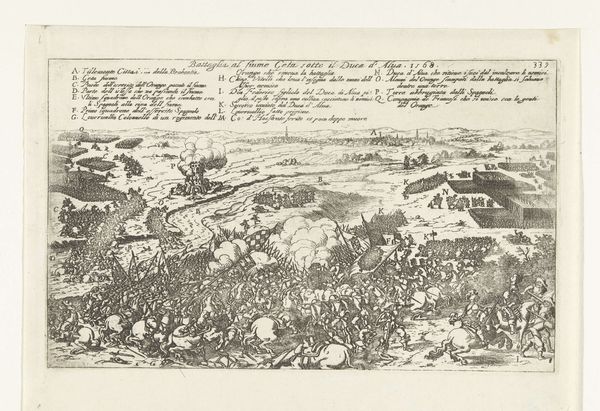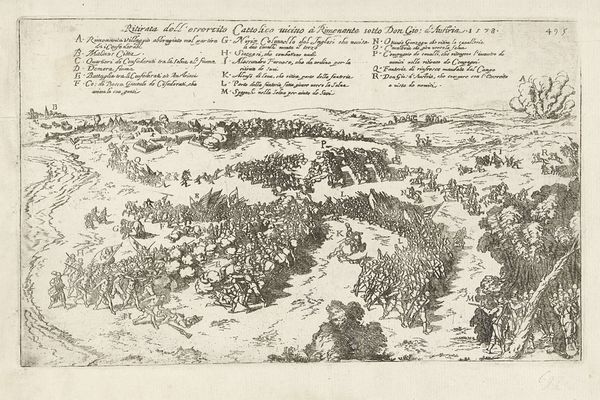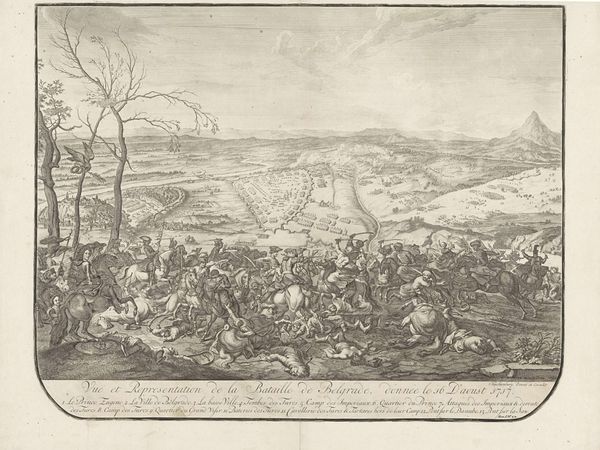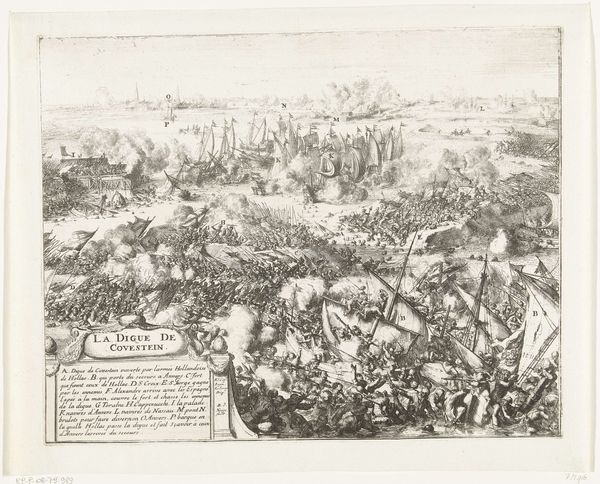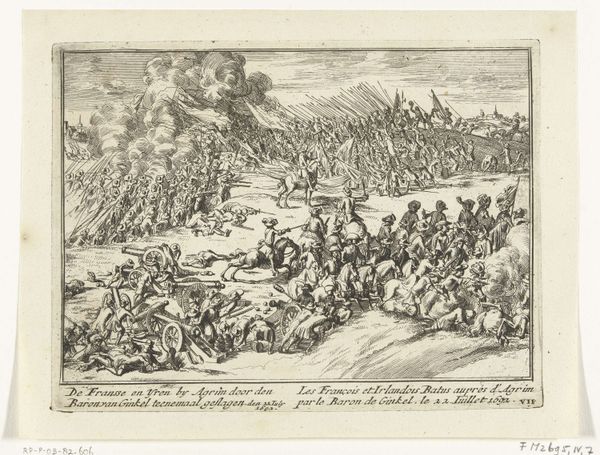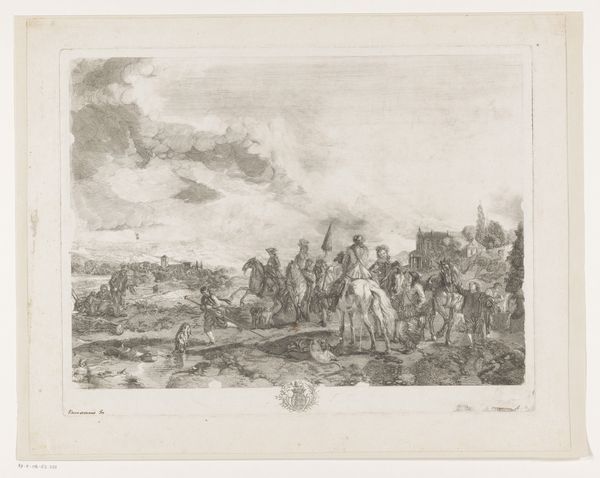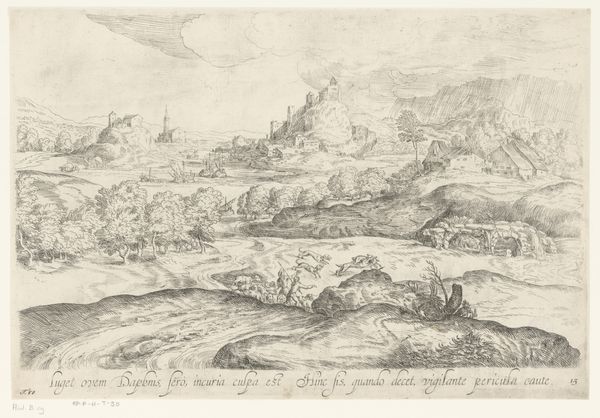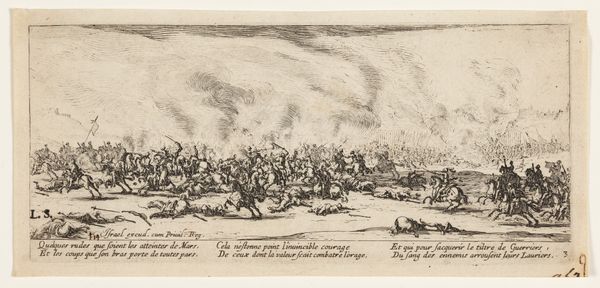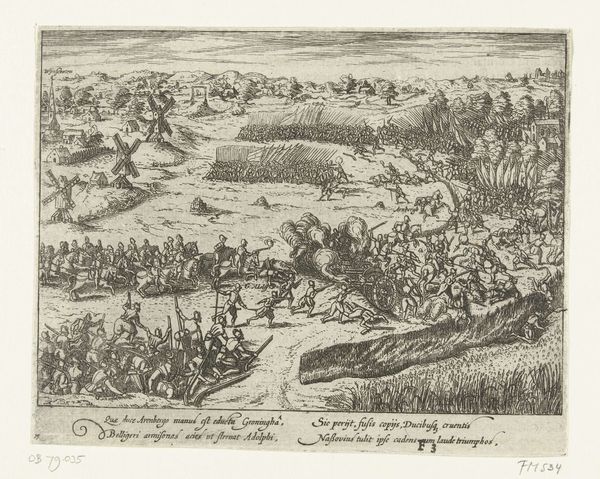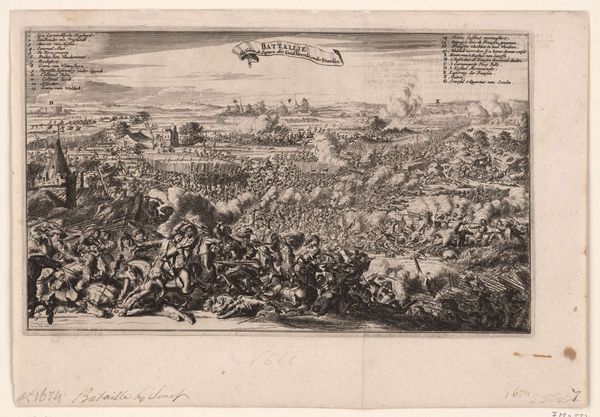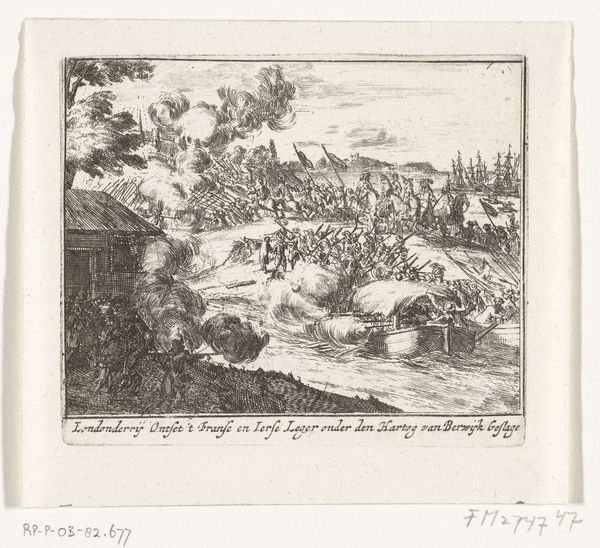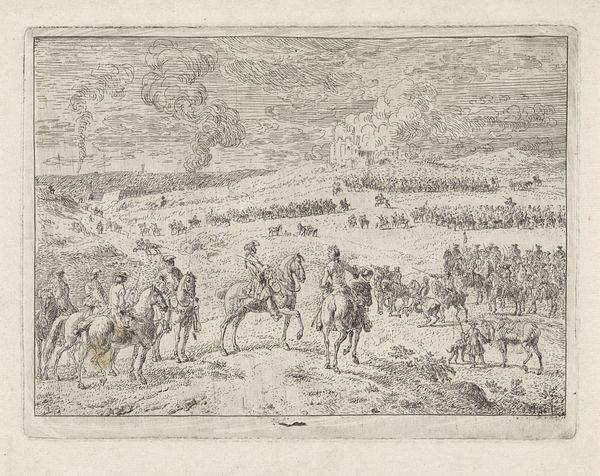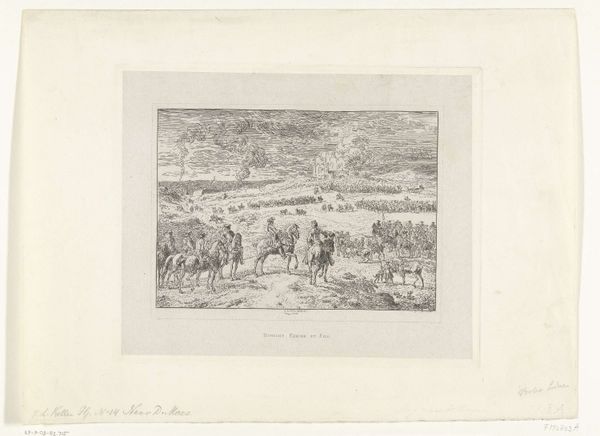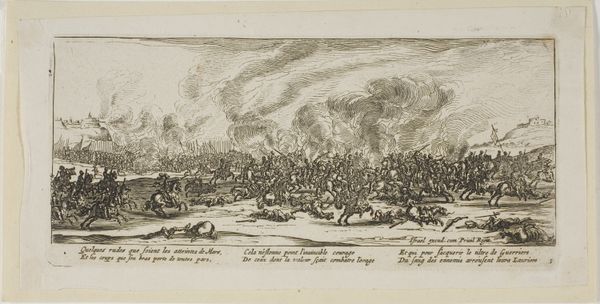
Nachtelijk tocht van Spaanse soldaten door het water naar Duiveland, 1575 1630 - 1699
0:00
0:00
anonymous
Rijksmuseum
drawing, print, ink, engraving
#
drawing
#
baroque
# print
#
landscape
#
figuration
#
ink
#
line
#
history-painting
#
engraving
Dimensions: height 188 mm, width 304 mm
Copyright: Rijks Museum: Open Domain
Editor: Here we have an engraving titled "Nachtelijk tocht van Spaanse soldaten door het water naar Duiveland, 1575," or "Night March of Spanish Soldiers Through the Water to Duiveland, 1575," created sometime between 1630 and 1699 by an anonymous artist. The detail is incredible, it seems to depict a vast and somewhat chaotic military scene. What strikes you most about this piece? Curator: What I find fascinating is how this image participates in a larger historical narrative, one shaped by the Eighty Years' War and Dutch national identity. Prints like this served a crucial propagandistic role. It presents an event, the Spanish troops’ daring maneuver, but how does it *frame* this event? Is it celebratory or cautionary, for example? Editor: It’s hard to tell. It seems rather… matter-of-fact. The figures are so small, almost lost in the landscape. Curator: Exactly. Notice the composition: the receding lines of soldiers disappearing into the watery expanse. The high horizon emphasizes the vastness of the water. This visual strategy diminishes the individual, highlighting the overwhelming power, perhaps, of nature or the logistical challenges faced by the Spanish. The topography dominates and minimizes human actions and heroism. Consider how this might impact a 17th-century Dutch viewer’s understanding of the event. Is it really a story of Spanish triumph, or one of struggle and perhaps folly? Editor: That makes so much sense. It’s less about individual bravery and more about the larger forces at play. Seeing it that way definitely changes my initial impression. Curator: Precisely. This engraving serves as a reminder that historical images aren't neutral records. They are actively involved in shaping public opinion and collective memory. Editor: This gives me a lot to think about in terms of image making and power! Thank you for illuminating all these perspectives.
Comments
No comments
Be the first to comment and join the conversation on the ultimate creative platform.
